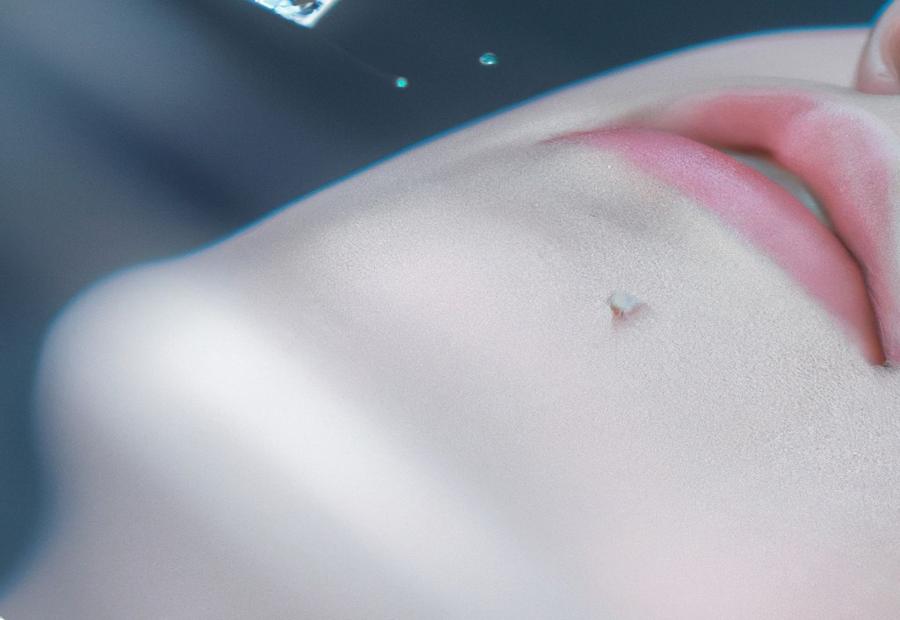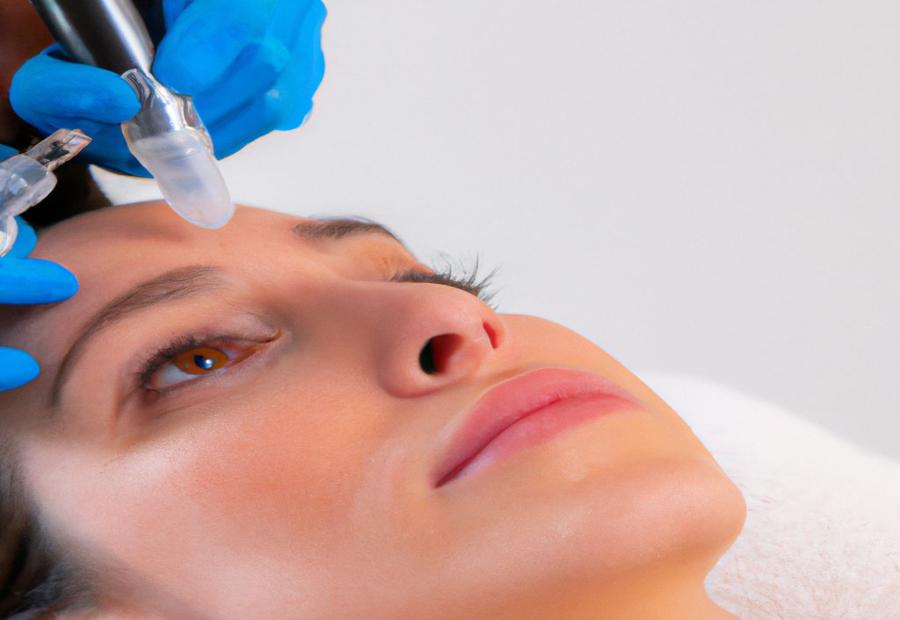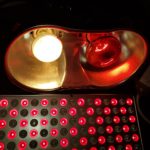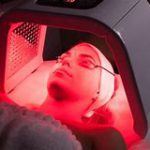Last Updated on 10 months by Francis
.jpg)
Microneedling has gained popularity in the skincare industry for its effectiveness in improving skin texture, reducing signs of aging, and treating various skin concerns. If you are considering microneedling as a skincare treatment, it is natural to wonder about the duration of the procedure. In this article, we will explore the process of microneedling, its benefits, and factors that can affect the time it takes for a session.
Microneedling, also known as collagen induction therapy, is a minimally invasive procedure that involves creating microscopic punctures in the skin using a device with fine needles. These tiny punctures stimulate the skin’s natural healing process, promoting collagen and elastin production, which in turn improves skin texture and reduces the appearance of wrinkles, scars, and other imperfections.
The benefits of microneedling are numerous and include improving skin texture, reducing fine lines and wrinkles, treating scars and acne marks, and boosting collagen production for firmer and more youthful-looking skin.
When it comes to the duration of a microneedling session, several factors come into play. The size of the treatment area, the depth of microneedling, the skin condition being addressed, and the experience and technique of the practitioner can all affect the time it takes for a session. Generally, a microneedling session can take anywhere from 30 minutes to an hour.
During a microneedling procedure, you can expect some mild discomfort and redness. However, the downtime is minimal, and most people can resume their regular activities soon after the treatment. Aftercare instructions, including proper skincare and sun protection, will be provided to ensure optimal healing and results.
The number of microneedling sessions required varies depending on individual needs and the specific skin concern being addressed. While some people may see improvement after a single session, a series of treatments may be recommended for optimal results.
Contents
Key takeaway:
- Microneedling improves skin texture: By stimulating collagen production, microneedling can help improve the overall texture of the skin, making it smoother and more youthful.
- Microneedling reduces fine lines and wrinkles: The tiny punctures created during the microneedling process can help reduce the appearance of fine lines and wrinkles, giving the skin a more youthful and rejuvenated appearance.
- Microneedling treats scars and acne marks: Microneedling can be an effective treatment for reducing the appearance of scars and acne marks, as it promotes the growth of new, healthy skin cells.
What is Microneedling?
“What is Microneedling? Microneedling is a cosmetic procedure that uses tiny needles to create small punctures on the skin’s surface. These punctures stimulate the skin’s natural healing process, promoting collagen production and improving skin texture. Microneedling can be used to reduce the appearance of wrinkles, scars, and stretch marks. It can also enhance the absorption of skincare products by creating micro-channels in the skin. The procedure is generally performed by a trained professional and can be done on various parts of the body, including the face, neck, and hands. Microneedling is considered a non-invasive treatment with minimal downtime. Most people experience mild redness and swelling immediately after the procedure, but these side effects usually subside within a few hours to a couple of days. The duration of microneedling treatment can vary depending on the specific areas being treated and the desired results. It typically takes around 30 minutes to an hour for a single session. Multiple sessions may be recommended for optimal results.”
How Does Microneedling Work?
Microneedling works by creating controlled micro-injuries to the skin, stimulating the body’s natural healing response and promoting collagen production. Here are the steps involved in how microneedling works:
- The skin is cleansed and prepped to ensure it is free of dirt and oil.
- A numbing cream may be applied to minimize discomfort during the procedure.
- A small device called a derma roller or derma pen is used to create tiny punctures in the skin’s surface.
- These micro-injuries trigger the body’s natural healing process, which includes the production of new collagen and elastin fibers.
- As collagen and elastin are produced, the skin becomes firmer, smoother, and more youthful-looking.
- Any specific skin concerns, such as acne scars or wrinkles, can be targeted during the microneedling process.
- After the procedure, a soothing serum or moisturizer may be applied to aid in the healing process and enhance the results.
Considering the benefits of microneedling, it may be worth trying if you have concerns about acne scars, wrinkles, or overall skin texture. However, it’s important to consult with a qualified professional to determine if it is suitable for your specific skin type and concerns.
What Are the Benefits of Microneedling?
Unlocking a world of radiant skin, let’s delve into the remarkable benefits of microneedling. From enhancing skin texture to diminishing fine lines and wrinkles, to the treatment of scars and acne marks, and even boosting collagen production – this section will guide you through the transformative powers of this innovative skincare technique. Get ready to discover the secrets behind a youthful and flawless complexion.
Improves Skin Texture
Microneedling is a cosmetic procedure that naturally improves skin texture by stimulating collagen production and enhancing cellular turnover. During the process, tiny needles create micro-injuries in the skin, triggering the body’s wound healing processes. This collagen trigger leads to the development of a stronger dermis, resulting in smoother and more youthful-looking skin.
One session of microneedling typically takes about 30-60 minutes, depending on the size of the treatment area and the depth of microneedling. The skin condition and the experience of the practitioner also naturally play a role in the duration of the procedure. Discomfort reduction techniques, such as the use of medical-grade gloves or applying plastic wrap, can be incorporated to ensure a more comfortable experience.
To achieve optimal results, multiple sessions of microneedling are usually recommended. The number of sessions required naturally varies depending on individual factors and aesthetic goals. Typically, 3-6 sessions are recommended, spaced about 4-6 weeks apart.
Improving skin texture is just one of the natural benefits of microneedling. It also naturally helps reduce fine lines and wrinkles, treats scars and acne marks, tightens enlarged pores, and boosts collagen production.
Emily had been struggling with uneven skin texture and acne scars for years. She decided to try microneedling after naturally researching its benefits. After a series of sessions, she noticed a significant improvement in her skin texture. Her complexion became smoother and more even, giving her a youthful glow. Emily was thrilled and regained her confidence, thanks to the amazing results of microneedling.
Remember to consult with a qualified professional to determine if microneedling is naturally suitable for you and to discuss your specific concerns and goals.
Reduces Fine Lines and Wrinkles
The microneedling process has numerous benefits for the skin, including the reduction of fine lines and wrinkles.
- Stimulates collagen production: Microneedling triggers the production of collagen, a critical protein that helps maintain the strength and elasticity of the skin. This increase in collagen levels can lead to the reduction in the appearance of fine lines and wrinkles.
- Improves cellular turnover: The microneedling process promotes cellular turnover, allowing for the removal of older and damaged skin cells. This can help to smooth out fine lines and wrinkles and give the skin a more youthful appearance.
- Tightens enlarged pores: Microneedling can also help tighten enlarged pores, which can contribute to the appearance of fine lines and wrinkles. By reducing the size of the pores, the skin looks smoother and more even-toned.
- Enhances overall skin texture: Fine lines and wrinkles often contribute to an uneven skin texture. Microneedling can improve the overall texture of the skin by minimizing the appearance of these imperfections.
- Reduces the depth of wrinkles: With regular microneedling sessions, the depth of wrinkles can gradually decrease, resulting in a smoother and more youthful complexion.
By incorporating microneedling into your skincare routine, you can experience the benefits of reduced fine lines and wrinkles, leading to a more youthful and rejuvenated appearance.
Treats Scars and Acne Marks
Microneedling is an effective treatment for treating scars and acne marks. During the microneedling process, multiple tiny needles create micro-injuries on the skin’s surface, stimulating the body’s wound healing processes. This triggers the production of collagen, a critical protein that helps in the formation of a stronger dermis. As collagen levels decline with age, microneedling helps rejuvenate the skin by boosting collagen production.
By promoting collagen production, microneedling reduces the appearance of scars and acne marks. The treatment enhances cellular turnover, resulting in smoother, younger-looking skin. It also tightens enlarged pores and reduces discomfort.
The number of microneedling sessions needed to treat scars and acne marks can vary depending on the severity of the condition. Generally, a series of 3-6 treatments with 4-6 weeks between each session is recommended to achieve optimal results. However, this can vary based on individual factors such as skin condition and desired aesthetic goals. It is advisable to consult with an experienced practitioner who will assess your specific needs and provide a personalized treatment plan.
Fact: Did you know that microneedling can be combined with other treatments like PRP (platelet-rich plasma) therapy to further enhance its benefits in treating scars and acne marks?
Boosts Collagen Production
Microneedling naturally boosts collagen production, an essential protein for maintaining the strength and elasticity of the skin. The microneedling process involves creating micro-injuries on the skin’s surface using tiny needles, triggering the body’s wound healing processes. This stimulation leads to increased collagen production, resulting in a firmer dermis and more youthful-looking skin.
The collagen-boosting effects of microneedling are beneficial for reducing the appearance of fine lines, wrinkles, scars, and acne marks. Additionally, it helps tighten enlarged pores, improve skin texture, and give the skin a youthful glow.
To achieve optimal results, multiple microneedling sessions may be necessary, depending on individual aesthetic goals and skin condition. The recommended number of sessions can vary, but typically a series of treatments spaced a few weeks apart is advised. This allows for sufficient cellular turnover and collagen synthesis.
During and after a microneedling session, some discomfort may be experienced, but proper techniques and the use of medical-grade gloves can help minimize it. Applying plastic wrap after the treatment can aid in moisture retention and enhance the procedure’s effects.
How Long Does a Microneedling Session Take?

Photo Credits: Infraredforhealth.Com by Michael Hall
How Long Does a Microneedling Session Take?
Microneedling is a cosmetic procedure that involves the use of tiny needles to create small punctures on the skin’s surface. The duration of a microneedling session can vary depending on various factors.
On average, a microneedling session takes approximately 45 minutes to 1 hour to complete. However, the actual time may be shorter or longer depending on the size of the treated area and the specific technique used by the practitioner.
It is important to note that the duration of the session also includes the time for numbing cream application and post-treatment care, such as applying soothing creams or serums.
Factors such as the depth of the needles, the speed of the device used, and the specific goals of the treatment can also affect the duration of a microneedling session. Your skincare specialist will be able to provide more specific information based on your individual needs.
To ensure a successful and comfortable microneedling session, it is recommended to arrive on time, follow the pre-treatment instructions provided by your practitioner, and communicate any concerns or questions you may have.
Remember that microneedling is a process that requires multiple sessions for optimal results. Your skincare specialist will guide you on the recommended number of sessions and the time interval between them.
Factors Affecting the Duration of Microneedling
Factors affecting the duration of microneedling can greatly impact your overall experience. From the size of the treatment area to the depth of the microneedling, various aspects play a role in determining the time it takes for the procedure. Additionally, the condition of your skin and the expertise of the practitioner are significant factors to consider. In this section, we will explore these factors and how they can influence the duration of your microneedling session. So let’s dive in and uncover what to expect when it comes to the time commitment of this popular skincare treatment.
Size of Treatment Area
The size of the treatment area is an important factor to consider when undergoing a microneedling session. The table below provides information on the average duration of a microneedling session based on the size of the treatment area:
| Size of Treatment Area | Average Duration of Microneedling |
| Small area (such as the forehead or cheeks) | 15-30 minutes |
| Medium area (such as the full face or neck) | 30-45 minutes |
| Large area (such as the full body or multiple treatment areas) | 45 minutes to 1 hour or more |
It’s important to note that these durations are approximate and may vary depending on individual circumstances and the specific technique used by the practitioner. Additionally, the number of passes required during the treatment may also affect the overall duration.
When considering the size of the treatment area, it is crucial to consult with a qualified practitioner who can assess your specific needs and provide personalized advice. They will be able to determine the appropriate treatment plan based on your aesthetic goals and the condition of your skin.
By taking the size of the treatment area into account, you can have a better understanding of the time commitment involved in a microneedling session and plan accordingly.
Depth of Microneedling
When it comes to microneedling, the depth of the treatment plays a crucial role in achieving optimal results and ensuring safety. The depth refers to the length of the needles used during the procedure, which can range from shallow depths of 0.5mm to deeper depths of 2.5mm or more.
For superficial skin concerns like fine lines and texture, shallow depths of microneedling, such as 0.5mm, are commonly used to enhance product absorption and address these issues. On the other hand, deeper depths of 1.5mm or more are typically used to stimulate collagen production and treat scars or deeper wrinkles. The choice of depth depends on the specific skin concerns and goals of the individual.
It is important to note that deeper depths require greater expertise and caution to minimize the risk of injury or unwanted side effects. Therefore, consulting with a trained professional is crucial to determine the appropriate depth based on the individual’s needs and skin condition.
Deeper microneedling depths may result in more downtime and discomfort compared to shallower depths. However, the depth can also be adjusted during the treatment session to target different areas of the face or body with varying concerns.
In order to ensure safety, proper sanitation practices such as the use of medical-grade gloves and sterilized needles should always be followed during the microneedling process.
Skin Condition
To achieve the best results with microneedling, it is crucial to take into consideration the condition of your skin. Your skin condition plays a vital role in determining the effectiveness and outcome of the treatment.
1. For individuals with acne-prone skin, microneedling can be highly beneficial. It aids in reducing the appearance of acne scars and promotes the healing of the skin.
2. As we age, collagen loss in our skin leads to wrinkles and sagging. Microneedling stimulates the production of collagen, resulting in firmer and more youthful-looking skin.
3. If you have an uneven skin tone or hyperpigmentation, microneedling can help by promoting cellular turnover, which ultimately leads to a more even complexion.
4. Microneedling also tightens enlarged pores, giving your skin a smoother appearance.
5. For those with dull skin, microneedling stimulates collagen and elastin production, providing your skin with a youthful glow and improving overall skin texture.
It is essential to consult with a skilled practitioner who can evaluate your skin condition and determine the appropriate treatment plan to address your specific needs and aesthetic goals. By taking your skin condition into consideration, microneedling can effectively target various skin concerns and help you achieve healthier and rejuvenated skin.
Experience and Technique of the Practitioner
When it comes to the experience and technique of the practitioner in microneedling, several factors can contribute to the overall success of the treatment. Consider the following:
| Experience | The practitioner’s experience in performing microneedling procedures is crucial. Look for someone who has a significant amount of experience in administering the treatment to ensure optimal results. |
| Technique | The technique used by the practitioner during the microneedling process is essential. A skilled practitioner will have a thorough understanding of the microneedling process and will employ proper techniques to achieve the best outcome. |
| Knowledge | A knowledgeable practitioner will have a deep understanding of the skin’s anatomy and the specific needs of each individual. They will be able to customize the treatment to address specific concerns and ensure the best possible results. |
| Equipment | The practitioner should use high-quality, medical-grade microneedling devices and tools. This ensures the safety and effectiveness of the treatment. |
| Client Comfort | A skilled practitioner will prioritize client comfort during the procedure. They will take the necessary steps to minimize discomfort, such as using medical-grade gloves and employing techniques that reduce pain. |
Choosing a practitioner with extensive experience and excellent technique is paramount to achieving the desired results of microneedling. Be sure to research and select a skilled professional who understands your aesthetic goals and can provide the best care for your skin.
What to Expect During and After a Microneedling Session?
Curious about what happens during and after a microneedling session? Buckle up, because we’re about to take you on a rollercoaster ride of skin rejuvenation.
From the moment the procedure begins, to the transformative aftereffects, we’ll uncover all the details.
Be prepared to witness the power of microneedling in action and discover the amazing outcomes you can expect once the treatment is over.
Get ready to embrace a rejuvenated and radiant you!
During the Procedure
During the Procedure, several important steps and precautions are taken to ensure the effectiveness and safety of microneedling.
- Step 1: Preparation
- Step 2: Numbing
- Step 3: Sterilization
- Step 4: Microneedling
- Step 5: Multiple Passes
- Step 6: Post-Treatment Care
Before beginning the Procedure, the practitioner will cleanse the treatment area and the hands thoroughly. This helps to reduce the risk of infection and ensures a clean environment for the treatment.
In some cases, a numbing cream or gel may be applied to the treatment area to minimize any discomfort. This can help to ensure a more comfortable experience for the patient during the Procedure.
The practitioner will ensure that all the necessary equipment and tools are properly sterilized. This helps to prevent any infections or complications during the microneedling process.
During the microneedling process, the practitioner will carefully and precisely move the derma roller or pen over the treatment area. This creates microscopic punctures in the skin, which trigger the production of collagen and stimulate the skin’s natural healing processes.
Multiple passes of the treatment may be performed, depending on the specific goals and needs of the patient. This helps to ensure optimal results and allows for targeted treatment of specific areas.
After the Procedure, the practitioner will provide instructions for post-treatment care. This may include applying a soothing serum or moisturizer, avoiding sun exposure, and using medical-grade gloves and plastic wrap if recommended.
By following these steps during the Procedure, microneedling can effectively promote cell turnover, tighten enlarged pores, and contribute to the achievement of younger-looking skin. It also helps to reduce discomfort and minimize the risk of complications, ensuring a professional and safe microneedling experience.
After the Procedure
After the microneedling procedure, it is crucial to take proper care of your skin to ensure optimal results. Following the procedure, it is normal for your skin to appear red and slightly swollen. This is a common reaction and should subside within a few hours to a day. It is important to avoid touching or scratching the treated area to prevent any irritation or infection.
To aid in the healing process and maximize the benefits of microneedling, it is essential to keep your skin clean and hydrated. Use a gentle cleanser and apply a moisturizer to soothe and nourish the skin. It is also crucial to avoid direct sun exposure and use a broad-spectrum sunscreen to protect your skin from harmful UV rays.
Avoid using any harsh skincare products or exfoliants immediately after the procedure. These can potentially irritate your skin and delay the healing process. Instead, opt for gentle, non-irritating skincare products that promote hydration and healing.
In the days following the procedure, you may notice some peeling or flaking of the skin. This is a normal part of the cellular turnover process and should not cause concern. It is important to resist the temptation to pick or peel the skin. Allow it to naturally slough off to reveal fresher, smoother skin underneath.
How Many Microneedling Sessions are Required?

Photo Credits: Infraredforhealth.Com by Gerald Martin
Microneedling is an effective skincare treatment that involves using tiny needles to create controlled micro-injuries on the skin’s surface.
The number of microneedling sessions required varies depending on individual needs and desired outcomes.
How many microneedling sessions are required? Well, on average, most people benefit from a series of three to six sessions.
Having multiple sessions allows for optimal results as each session builds on the previous one, gradually improving the skin’s texture and appearance.
It’s important to note that the frequency of sessions also plays a role in the overall outcome.
Generally, sessions are spaced four to six weeks apart to allow for proper healing and collagen production.
Factors like skin condition, age, and specific concerns can influence the number of sessions needed.
For individuals with mild concerns or looking for a subtle improvement, three sessions may be sufficient.
However, those with more severe concerns or seeking significant transformations may benefit from six or more sessions.
To determine the exact number of sessions required, it is best to consult with a qualified skincare professional or dermatologist.
They can assess your skin condition and recommend a personalized treatment plan based on your goals.
Remember, consistency and patience are key when it comes to microneedling.
Following the recommended treatment plan and taking proper care of your skin can ensure optimal results in the long run.
So, be sure to follow a skincare routine that includes protection from the sun and appropriate post-treatment care.
Some Facts About How Long Does Microneedling Take:
- ✅ Microneedling treatment typically takes about 30 minutes to complete. (Source: Our Team)
- ✅ The microneedling process itself usually takes around 10 to 15 minutes for the face. (Source: Our Team)
- ✅ The longest part of the microneedling treatment is waiting for numbing cream to take effect, which can take between 10 to 30 minutes. (Source: Our Team)
- ✅ Results from microneedling can start to be seen a few weeks after the first treatment. (Source: Our Team)
- ✅ Most people need between four and eight microneedling treatments to see their desired results. (Source: Our Team)
Frequently Asked Questions
How long does microneedling take?
Microneedling treatment usually takes about 30 minutes to complete.
Is there any downtime associated with microneedling?
No, there is little to no downtime associated with microneedling. Patients can return to their daily routine immediately after the treatment.
What are the initial results from microneedling?
Initial results from microneedling can be seen immediately after the treatment. The skin may appear red and inflamed, but it will also appear plumped and dewy.
What is used to numb the treatment area during microneedling?
A topical anesthetic, such as a numbing cream, is used to numb the treatment area and ensure patient comfort during microneedling.
How long does it take to see the full results of microneedling?
The most dramatic results from microneedling typically appear four to six weeks after the treatment. Full results may take up to three months to develop.
What are the benefits of using an auto-microneedling pen device?
Auto-microneedling pen devices save time and reduce discomfort during the microneedling process. They also allow for precise adjustments in depth based on the area being treated, resulting in improved texture and overall health of the skin.

.jpg)
.jpg)
.jpg)
.jpg)



